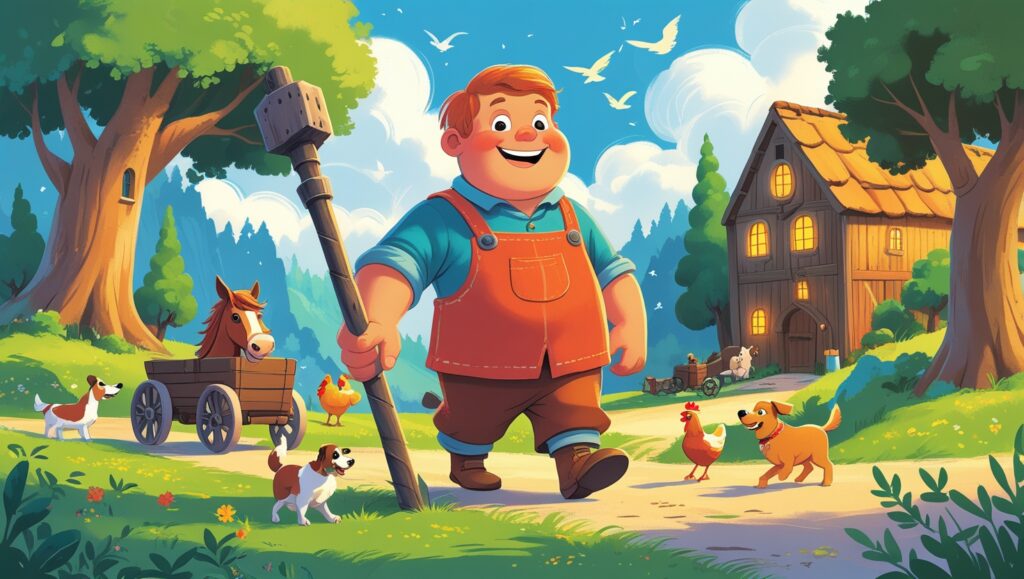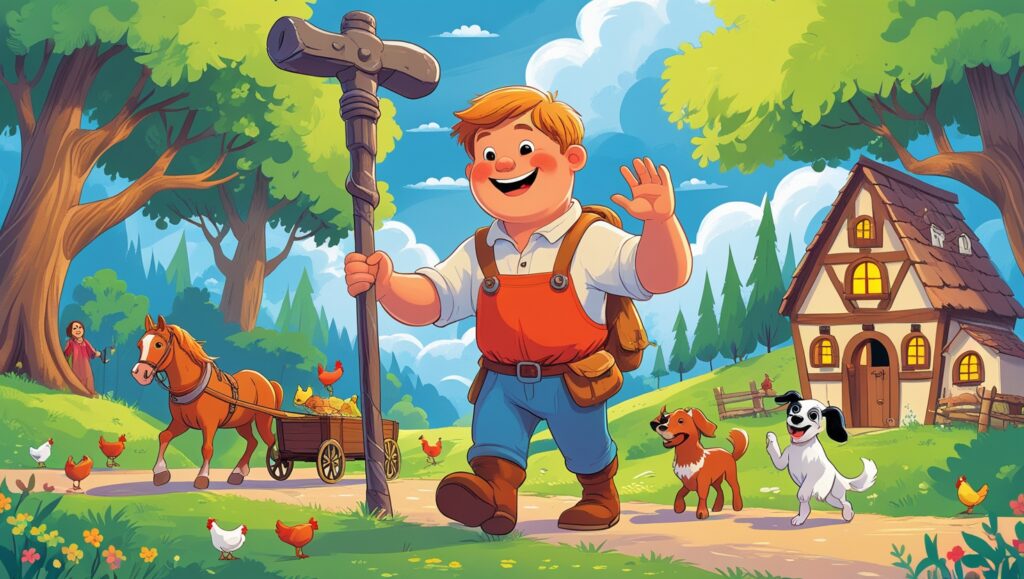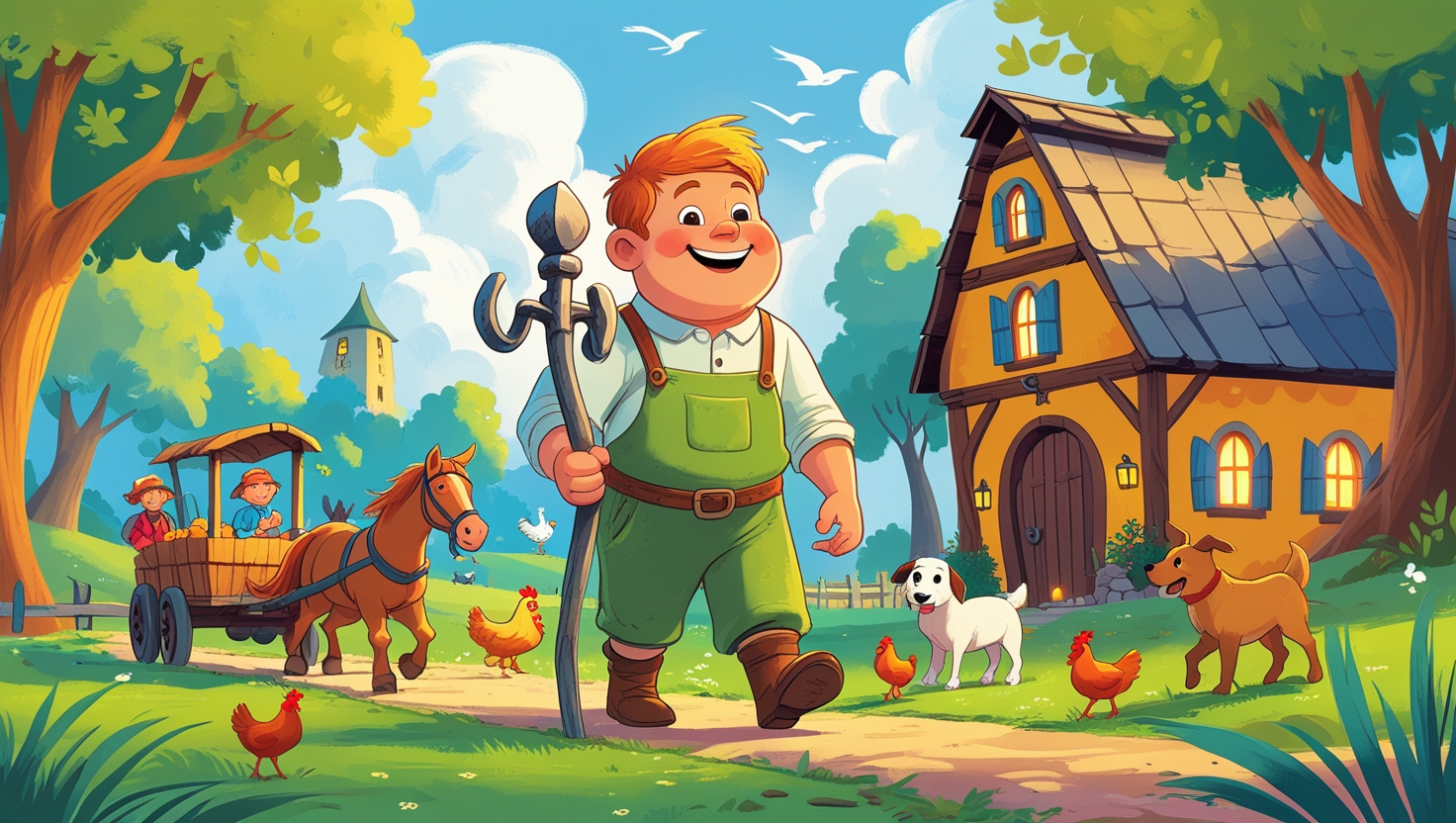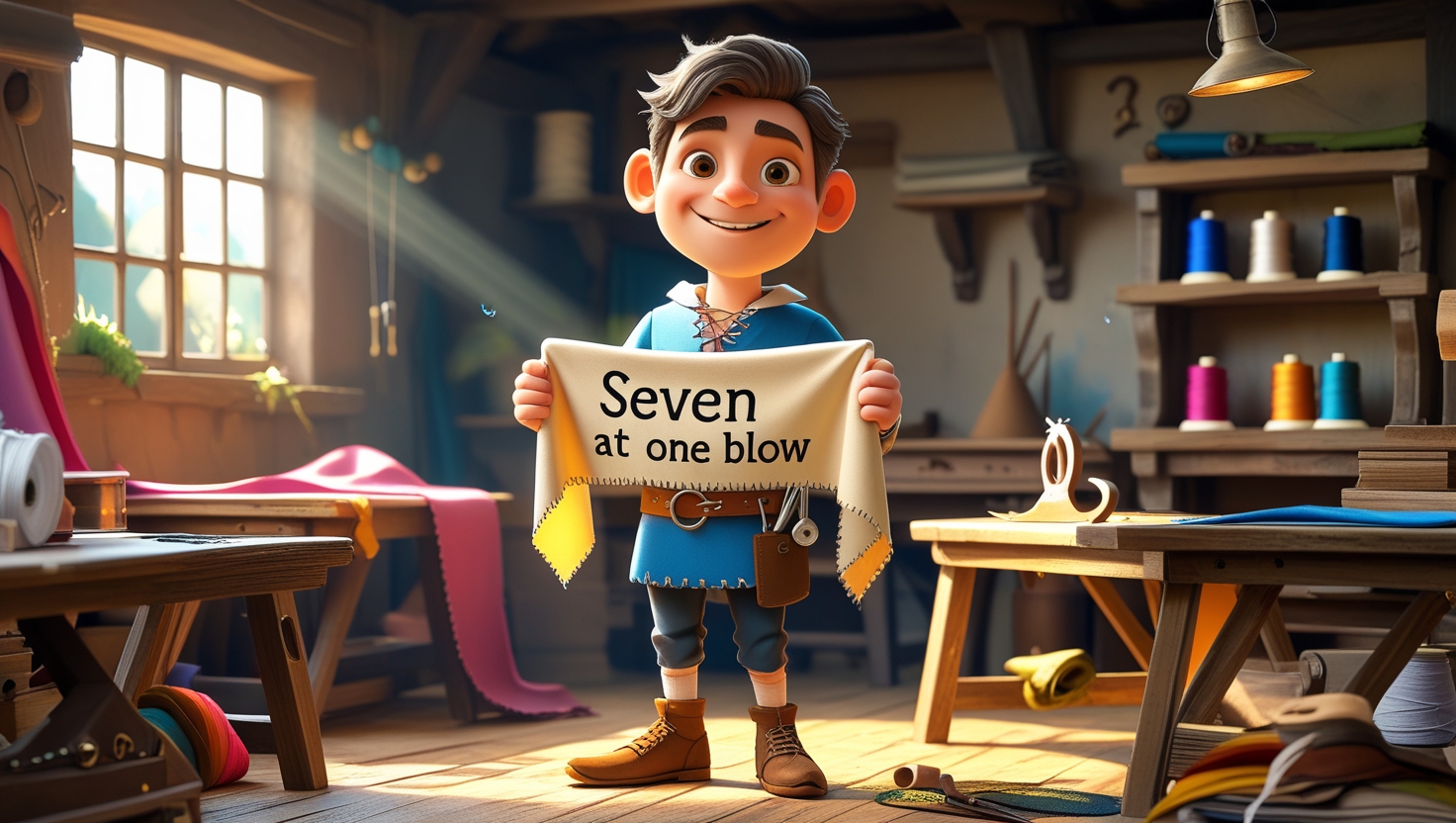Background & Origins of “The Young Giant”
The Young Giant is a classic fairy tale giant story collected by the Brothers Grimm, blending rustic charm with a timeless moral. It follows a thumb-sized boy growing into a giant after magical food transforms his life. From the quiet village where he is born to the shadowed forest where trials await, the tale captures the spirit of a true folklore hero.
Along the way, he meets cunning masters, faces daunting tasks, and learns that strength alone cannot win respect. With vivid scenes like uprooting oak trees or spending a night in a haunted mill, this coming-of-age journey continues to captivate listeners of all ages.
Summary of the Plot “The Young Giant”
The story begins with Thumbling, a boy so tiny he could fit in his father’s palm. When a wandering old giant offers enchanted food, the boy eats and begins to grow faster than anyone thought possible. Soon, he can uproot trees, break iron, and plough the land across the field and farmland with incredible ease.
Seeking to earn his way, the folklore hero leaves his village for work at a smithy / forge. The greedy blacksmith / smithy tries to exploit his power, but when told to strike an anvil, the young giant smashes it in half. His journey leads him to many places, including a haunted mill, where haunted mill ghosts prepare a ghostly feast that vanishes before morning.
Key Themes & Symbolism “The Young Giant”
This coming-of-age tale contrasts work ethic vs laziness, showing that strength without wisdom is easily misused. The repeated master and apprentice dynamic reveals exploitation and unfair demands, underscoring the importance of self-worth and standing firm against manipulation.
The story’s symbolism is layered and vivid. The iron staff stands for raw power, while the wallet of grain and bushels of peas signify sustenance and survival. The forest represents uncertainty, and the haunted mill is a trial of courage. The supernatural encounter with ghosts warns that rewards won dishonestly disappear as quickly as they come.
Character Analysis “The Young Giant”
The central folklore hero is The Young Giant, whose transformation from Thumbling into a towering figure mirrors his journey from innocence to wisdom. Initially eager to serve, he grows cautious as he learns that power attracts both respect and deceit.
Supporting characters include the mentoring yet mysterious old giant, the cunning blacksmith, the self-serving bailiff, and the sharp-witted bailiff’s wife. Figures such as the smith’s apprentice, servants and clerks, and the miller each play roles that reflect greed, loyalty, or clever opportunism.
Variants & Related Tales “The Young Giant”
Many cultures tell similar tales, such as Strong Hans and The Strong Gottlieb. In these stories, the hero might carry a cart or horses, throw someone out a window, or barricade a forest path to face challengers. The haunted mill trial is a recurring motif in northern folklore.
While some versions end with the hero punished for arrogance, The Young Giant rewards intelligence and persistence. These variations reveal how storytelling adapts to different values while preserving shared motifs.
Cultural Impact & Interpretations

This tale blends trickery and revenge, supernatural encounter, and moral clarity in a way that engages both young and adult listeners. Its focus on self-reliance and courage gives it enduring appeal. The haunted mill scene, with its ghostly feast that vanishes, remains one of the most haunting images in folklore.
Folklorists often interpret the hero’s trials as a metaphor for breaking free from exploitation. The freedom from a supernatural curse in the haunted mill represents overcoming fear and reclaiming one’s agency.
Adaptations & Translations
Over time, translators have brought new tones to this story. Some emphasize moral lessons, while others highlight adventure and humor. Illustrated editions capture moments like breaking tools with bare hands or ploughing the land under towering oak trees.
Stage, audio, and animated adaptations have kept the fairy tale giant alive for modern audiences. In some retellings, the haunted mill becomes a barn filled with ghost / spirit figures, making the supernatural trial more familiar yet still chilling.
Comparison to Other Giant Tales
Unlike “Jack and the Beanstalk,” which centers on defeating a giant, The Young Giant makes the giant the hero. Its conflict lies not in slaying a monster but in resisting human greed and unfair treatment. This shift creates a more personal and relatable struggle.
Where other giant stories end with destruction, this one concludes with growth and self-respect. The master and apprentice relationships add complexity rarely found in single-clash tales.
Why “The Young Giant” Still Resonates Today
The journey from thumb-sized boy growing into a giant to confident hero resonates with anyone who’s been underestimated. It shows that real power lies not just in strength but in clever choices and dignity.
Its mix of humor, danger, and supernatural encounter keeps audiences engaged. The image of a boy transformed by magical feeding to grow strong is unforgettable, making this story both memorable and meaningful.
Conclusion & Takeaways

The Young Giant weaves farming life, magical transformation, and moral lessons into a single enduring narrative. From ploughing the land to braving haunted mill ghosts, the hero’s path proves that wisdom can outmatch brute force.
It remains a vibrant example of how folklore hero tales can inspire courage, self-respect, and resourcefulness. Whether facing the grind of the field and farmland or the chilling silence of a haunted mill, the lesson stands: strength is nothing without the will to use it well.
FAQs
1. What is The Young Giant about?
It’s the story of a thumb-sized boy growing into a giant who learns to use his power wisely.
2. Who are the main characters in The Young Giant?
The young giant, an old giant, a blacksmith, a bailiff, and haunted mill ghosts.
3. What is the main lesson of the story?
True strength is balanced with wisdom and self-respect.
4. Is The Young Giant part of Grimm’s Fairy Tales?
Yes, it was collected by the Brothers Grimm in the 19th century.
5. What settings appear in the story?
A village, a forest, a smithy, farmland, and a haunted mill.
6. What magical elements are in the tale?
Magical feeding for strength, supernatural ghosts, and impossible feats like uprooting oak trees.
7. How does the young giant defeat his challenges?
By outsmarting his masters and using his immense strength strategically.
8. Is The Young Giant similar to other giant tales?
It differs by making the giant the hero instead of the villain.
9. Why is the haunted mill important?
It tests the hero’s courage and frees him from a supernatural curse.
People also as”
The Needle Tree
The Bear and the Two Friends
The Dog at the Well
The Tortoise and the Bird
The Cows and the Tiger
The Four Students





